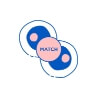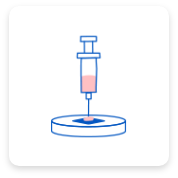Cord blood is the blood found in the baby’s umbilical cord, it is a rich source of Haemopoietic Stem Cells (HSCs). These stem cells make up the building blocks in our blood and immune system throughout our life. A baby’s own cord blood guarantees a perfect match for him/her. Cord Blood Stem Cells are clinically proven to be used in the treatment of more than 80 diseases*, such as blood disorders, certain childhood & blood cancers, metabolic disorders and immunodeficiency syndrome.

You can be assured that your baby’s Stem Cells will always be a perfect match for him/her if the need arises.

Can be used to treat over 80 diseases*, with the potential to treat many more diseases in the future.

Cord Blood Stem Cells can potentially be used to treat other biological family members.

Cord Blood Stem Cells can be stored indefinitely and remain viable as a source of stem cell transplantation when needed

Your Cord Blood Stem Cell sample can be made available to you whenever you need it, without the hassle and process of searching for a donor.
*Reference: https://parentsguidecordblood.org/en/diseases

Over 21 years’ experience and a proven release track record

Providing increased usage of your samples and added security and peace of mind

A prestigious accrediting organisation that is specific to Cord Blood Banks.

With wide medical knowledge on treatment options using stem cells

Providing additional coverage for your family

Provides 8 times more cell yield that is readily available for treatment.
Safeguard your family’s health by storing cord blood stem cells at birth. Learn more about the costs and procedures before making an informed choice for your family’s long-term health protection.
Cord blood storage is recommended for most mothers, except those with complex pregnancies. It provides families with a history of blood disorders or cancer an option for a stem cell transplant. Additionally, it is important for small families, single-child families, challenging pregnancies, sub-fertile couples, and diverse ethnic groups due to limited genetic matches in public banks.
Your baby’s cord blood can potentially be used for other family members, especially siblings. This is because we can still use the stem cells, with up to two antigens mismatches, in cord blood transplants.
Harvesting blood stem cells from cord blood is a painless and safe process, posing minimal risk to both mother and child. In contrast, bone marrow harvesting involves general anesthesia, associated health risks, and some pain.
Cord blood stem cells are readily available, eliminating the need for time-consuming donor searches, crucial in conditions like Aplastic Anemia. Additionally, cord blood transplants have a lower risk of Graft Versus Host Disease, making them less risky for recipients, even with partial matches.
Private cord blood banking ensures stored cells for individual and family use, with procedural training to ensure quality and safety. Cord blood transplants can be attempted even if there is no perfect HLA matching. In private cord blood banking, the stored blood stem cells are kept for the individual. In view of the above, the stored cord blood stem cells can potentially be used for other family members.
Each child’s cord blood stem cell sample is unique. Saving the cord blood for each of your children will help ensure that an exact genetic match is available. In addition, it increases the likelihood of a useful match between family members.
Blood stem cells, most often found deep in the bone marrow and in the peripheral blood circulation, are the factory of the blood system. They are crucial for stem cell transplants (SCT). SCT is a very important treatment option for many blood disorders and cancers. Hence, various blood stem cell banks have been set up across the world to provide potential blood stem cell donors. These stem cell banks are in the form of bone marrow registries and cord blood banks.
Your baby’s cord blood stem cells, a lifelong genetic match, can be stored indefinitely. Currently, cord blood can treat over 80 diseases, with the potential for even more in the future. This means your child has access to potential medical treatments for life.


